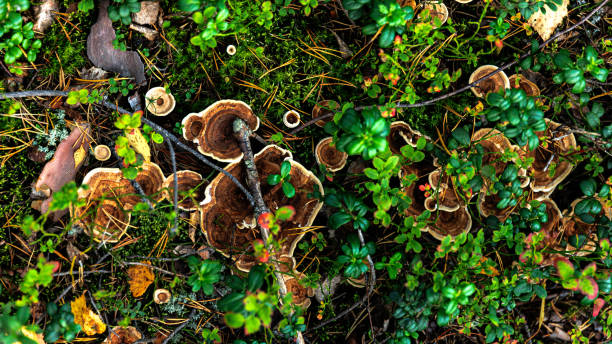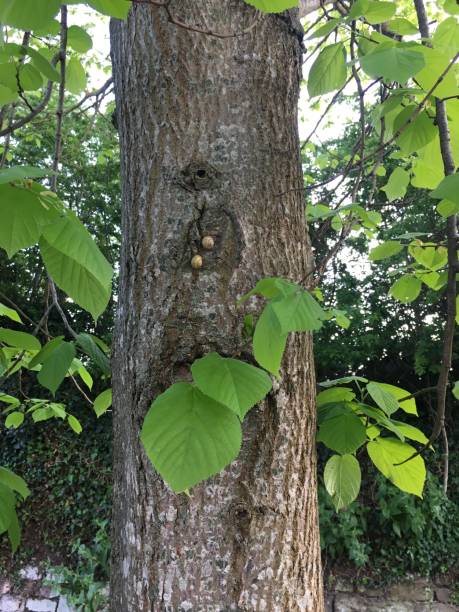
In the woods, a cluster of mushrooms is visibly growing on the forest floor, surrounded by a natural environment filled with various organisms and terrestrial plants
Browse 660+ snails on the bark of trees stock photos and images available, or start a new search to explore more stock photos and images.

In the woods, a cluster of mushrooms is visibly growing on the forest floor, surrounded by a natural environment filled with various organisms and terrestrial plants

Enchanted forest woodland themed fondant cake with a hedgehog, deer, owl, fox, snail, tree trunk, ferns, mushrooms and leaves on wooden background

Enchanted forest woodland themed fondant cake with a hedgehog, deer, owl, fox, snail, tree trunk, ferns, mushrooms and leaves on wooden background

A pair of banded snails on the bark of a large leaf lime tree

Collection 19 vector hand drawn round doodle elements for your design

pen and ink background layer pattern

A small snail in a shell crawls on a tree trunk. The photo has a brown background.

Selective focus picture of snail moving on wooden fence during raining season.

Roman snail near the green leaf of hosta.

Close-up photo of a snal on a tree bark.

Land snail attached to the bark of an old tree stump with a blurred green nature background on a sunny day, gastropod mollusk with an irregularly textured brown spiral shell. Space for text

Underwater close up photography from a great pond snail.

Snail crawling on pine-tree stump. Isolated on white background.

The macro shot of a Burgundy snail shell on the bark of a branch in the greenery

A vertical closeup of a beautiful snail on a mossy tree bark

Photo taken in the first spring days

Helix pomatia, common names the Roman snail, Burgundy snail, or escargot, is a species of large, edible, air-breathing land snail, a pulmonate gastropod terrestrial mollusc in the family Helicidae. It is one of Europe's biggest species of land snail. Description: The shell is creamy white to light brownish, often with indistinct brown colour bands. The shell has five to six whorls. The aperture is large. The apertural margin is white and slightly reflected in adult snails.The umbilicus is narrow and partly covered by the reflected columellar margin. The width of the shell is 30–50 mm. The height of the shell is 30–45 mm. Habitat: In southeastern Europe, H. pomatia lives in forests, open habitats, gardens, and vineyards, especially along rivers, confined to calcareous substrate. In Central Europe, it occurs in open forests and shrubland on calcareous substrate. It prefers high humidity and lower temperatures, and needs loose soil for burrowing to hibernate and lay its eggs. It lives up to 2100 m above sea level in the Alps, but usually below 2000 m. In the south of England, it is restricted to undisturbed grassy or bushy wastelands, usually not in gardens; it has a low reproduction rate and low powers of dispersal. Culinary use and history: Roman snails were eaten by both Ancient Greeks and Romans. Nowadays, these snails are especially popular in French cuisine. In the English language, it is called by the French name escargot when used in cooking (escargot simply means snail). Although this species is highly prized as a food, it is difficult to cultivate and rarely farmed commercially. Distribution: Distribution of H. pomatia includes: Southeastern and Central Europe (Source Wikipedia). This Picture is made during a Vacation in Bulgaria in May 2018.

Helix pomatia, common names the Roman snail, Burgundy snail, or escargot, is a species of large, edible, air-breathing land snail, a pulmonate gastropod terrestrial mollusc in the family Helicidae. It is one of Europe's biggest species of land snail. Description: The shell is creamy white to light brownish, often with indistinct brown colour bands. The shell has five to six whorls. The aperture is large. The apertural margin is white and slightly reflected in adult snails.The umbilicus is narrow and partly covered by the reflected columellar margin. The width of the shell is 30–50 mm. The height of the shell is 30–45 mm. Habitat: In southeastern Europe, H. pomatia lives in forests, open habitats, gardens, and vineyards, especially along rivers, confined to calcareous substrate. In Central Europe, it occurs in open forests and shrubland on calcareous substrate. It prefers high humidity and lower temperatures, and needs loose soil for burrowing to hibernate and lay its eggs. It lives up to 2100 m above sea level in the Alps, but usually below 2000 m. In the south of England, it is restricted to undisturbed grassy or bushy wastelands, usually not in gardens; it has a low reproduction rate and low powers of dispersal. Culinary use and history: Roman snails were eaten by both Ancient Greeks and Romans. Nowadays, these snails are especially popular in French cuisine. In the English language, it is called by the French name escargot when used in cooking (escargot simply means snail). Although this species is highly prized as a food, it is difficult to cultivate and rarely farmed commercially. Distribution: Distribution of H. pomatia includes: Southeastern and Central Europe (Source Wikipedia). This Picture is made during a Vacation in Bulgaria in May 2018.

Helix pomatia, common names the Roman snail, Burgundy snail, or escargot, is a species of large, edible, air-breathing land snail, a pulmonate gastropod terrestrial mollusc in the family Helicidae. It is one of Europe's biggest species of land snail. Description: The shell is creamy white to light brownish, often with indistinct brown colour bands. The shell has five to six whorls. The aperture is large. The apertural margin is white and slightly reflected in adult snails.The umbilicus is narrow and partly covered by the reflected columellar margin. The width of the shell is 30–50 mm. The height of the shell is 30–45 mm. Habitat: In southeastern Europe, H. pomatia lives in forests, open habitats, gardens, and vineyards, especially along rivers, confined to calcareous substrate. In Central Europe, it occurs in open forests and shrubland on calcareous substrate. It prefers high humidity and lower temperatures, and needs loose soil for burrowing to hibernate and lay its eggs. It lives up to 2100 m above sea level in the Alps, but usually below 2000 m. In the south of England, it is restricted to undisturbed grassy or bushy wastelands, usually not in gardens; it has a low reproduction rate and low powers of dispersal. Culinary use and history: Roman snails were eaten by both Ancient Greeks and Romans. Nowadays, these snails are especially popular in French cuisine. In the English language, it is called by the French name escargot when used in cooking (escargot simply means snail). Although this species is highly prized as a food, it is difficult to cultivate and rarely farmed commercially. Distribution: Distribution of H. pomatia includes: Southeastern and Central Europe (Source Wikipedia). This Picture is made during a Vacation in Bulgaria in May 2018.

Snail on a tree bark, nature background

close up of two snails on cherry trunk, Adobe RGB

small, green, slimy, slime, nature, background, summer, garden, outdoor, animal, snail, trunk, bark, tree, macro, natural, wallpaper, poster, spiral, still, rough, wood, texture, cute, mollusk, shell, brown, closeup, mucus,

small, green, slimy, slime, nature, background, summer, garden, outdoor, animal, snail, trunk, bark, tree, macro, natural, wallpaper, poster, spiral, still, rough, wood, texture, cute, mollusk, shell, brown, closeup, mucus,

Snail on the bark of a tree in the forest, blurred natural background, selective focus

close up of snail shell on tree trunk with rough bark on blur background

Snail on the bark of a tree in the forest, blurred natural background, selective focus

Brown and black-headed slug in the Breite Ancient Oak Reserve.

Nuthatch in his favorite position

A pair of banded snails on the bark of a large leaf lime tree

A pair of banded snails on the bark of a large leaf lime tree

A pair of banded snails on the bark of a large leaf lime tree

An apple snail, french escargot or vineyard snail, Helix pomatia, climbing up a tree bark. Picture taken in May, near Kleinviecht, Bavaria.

Snail and pine tree, isolated on white background. Close-up view

Three shells of snails on the green bark of a tree.

A Snail and a mysterious arthropod resting next to each other

a close-up of a beautiful patterned snail on a pine tree in turkey

A close-up of a snail slowly climbing a tree trunk in a lush garden. The detailed texture of the snail's shell and the bark creates a rich and organic composition. This image captures the simple beauty of nature's creatures in their natural environment, emphasizing patience, perseverance, and the slow pace of life in the natural world.

A close up image of a brown garden snail using very narrow depth of field.

Yellow shell snail heading down on the bark of a tree with green lichen

Orange shell snail heading down on the bark of a tree with green lichen

Thee colorful sea shells, copy space, on blue background